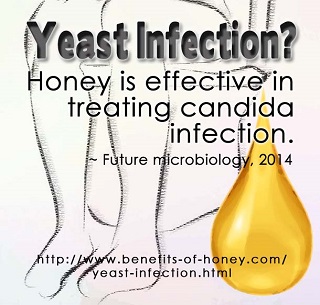
What's the No. 1 Yeast Infection Home Remedy?
Yeast Infection in Women
Vaginal yeast infection, or some people know it as vaginal thrush, is one of the most dreadful and common disease known amongst women that occurs to three-quarter of all women or more, at least once in their lives, for instance during menstruation, pregnancy, menopause, use of contraceptive pills, antibiotics, steroids. It could also be a result of soap sensitivities, sexual transmission, poor personal hygiene, and diabetes. Some women suffer from frequent bouts of it.
Severe Itching can be Tormenting
Candida albicans, a fungus permanently found in small amounts inside of the vagina is responsible for the infection. When the normal acidic environment inside the vagina goes out of balance, the Candida fungus multiplies rapidly and causes an infection. Lactobacillus acidophilus is a type of good bacteria that helps keep Candida in check. For instance, in the case of taking antibiotics to treat some sickness, acidophilus are inevitably killed together with the bad bacteria, thus giving Candida the chance to flourish. One way to introduce more acidophilus is to eat live-culture yogurt. Acidophilus is also available in supplement form.

Ranging from mild to severe, the symptoms of yeast infection can be distressing and drive many women nuts.
• redness and itching surrounding the vagina
• pain during sexual intercourse
• burning sensation during urination
• thick, white discharge from the vagina
Prevention Measures
The Candida yeast thrives in moist and warm environments, hence avoid:
• Wearing tight clothing, synthetic fabrics. Use absorbent cotton underwear.
• Damp bathing suits. Keep area dry. Stop swimming.
• Douching or using scented feminine hygiene products. • Taking too many bubble baths or using harsh soaps. Stick to mild, hypoallergenic products.
• After using the toilet always wipe from front to back, never back to front.
Effective Honey Home Remedy
There are many pharmaceutical treatments for yeast infection. When infected, many women head for the local drugstore and buy anti-fungal cream over-the-counter treatment, some go to the doctor to be prescribed ointments, oral medication, and some rely on home remedies. Many women found that raw honey from the bees works wonders for such infections and beats many doctor's prescribed anti-fungal creams. Clinical studies have also supported that honey flavonoids are effective in inhibiting Candida albicans, a pathogenic yeast (Future microbiology 9: 2014 Apr pg 445-456). A clinical study in 2015 involving 70 women infected with Candidal vulvovaginitis found that yogurt and honey is more effective than clotrimazole vaginal cream in treating vaginal candida infection (Global Journal of Health Science, Vol 7, No 6, 2015). Another research in 2017 also concluded that honey is a choice of treatment (we would say it is a choice treatment) for vulvovaginal candidiasis because it is readily available, cost effective and has no need for sterility (Journal of Medical Mycology, 2017 Jul 28).
Step-by-Step Honey Treatment Instructions
1. Mix 2 tablespoons of raw honey (about 30ml) and a tablespoon of plain, unsweetened yogurt and take the mixture in a cup into the bathroom. (Alternatively, you can also use all raw honey, about 40 to 50ml.)
2. Before application, wash and clean the genital area thoroughly.
3. Sit on the toilet and directly apply the mixture liberally over the affected area.
4. Push the liquid into the vagina and try to hold and keep it there wih your fingers for about ten minutes. It is normal for some people to feel a warm and stinging sensation there.
5. Bathe, wash and clean up. Do this twice a day, morning and just before going to bed at night.
In more severe cases of vaginal yeast infection where there is intense itching and irritation, consider using a medical grade of Manuka honey which has a higher antibacterial strength than most honeys. The infection should clear up in a few days using this honey douche, otherwise consult your doctor.